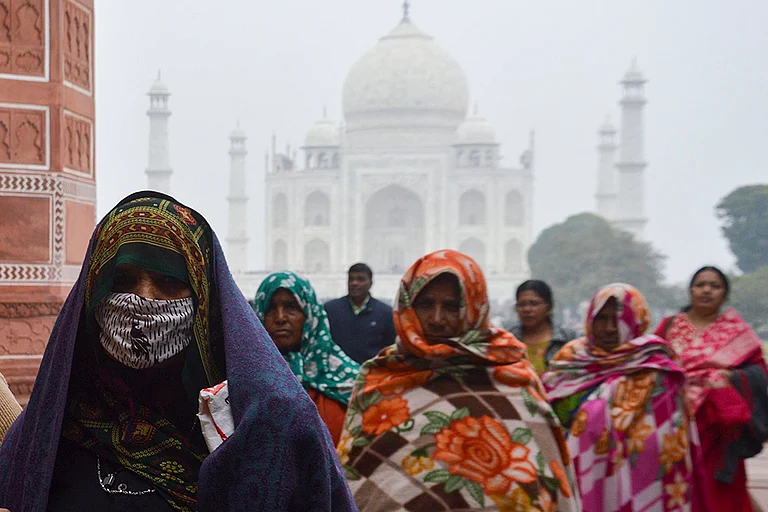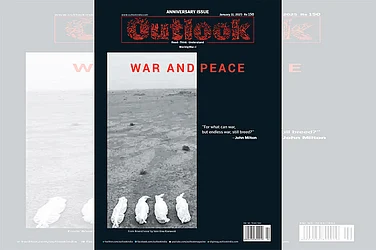McCluskieganj, a favourite haunt for birdwatchers, was born out of the Anglo-Indian community’s desire to have a niche of its own on Indian soil. Centuries back, during the early days of colonialism in the Indian subcontinent, the community was formed as a result of interracial marriages and liaisons between white European men and local Indian women.
Apprehensive of losing their job quotas and cultural distinctiveness in the post-colonial India, a large number of Anglo-Indians emigrated to the United Kingdom, Canada and Australia in the 1940s. Nevertheless, many community members stayed back either due to their pecuniary constrains or for their rootedness in the ‘motherland.’
The nationalist movement and the Independence placed them in a strange situation. According to author Alison Blunt, the Anglo-Indians were a “domiciled community” in India who “lived as an imperial diaspora without a place to call home.”
Frank Anthony, the President-in-Chief of the All India Anglo-Indian Association asserted that the Anglo-Indians are an Indian community and that it was their birthright to call India their home. However, unlike other major Indian communities—the Punjabis, the Biharis, the Bengalis, the Gujaratis, the Assamese and the Keralites—the Anglo-Indians did not own a state or union territory representing their settlement in India on the basis of their language and culture.
An urge to seek regional association for ratifying their collective identity as a distinct cultural group became strong among the Anglo-Indian leaders during the late 1920s and the 1930s when they realised that Britain had disowned them. They looked for a place that would be located in the motherland and at the same time its spatial codes would fit into the ideological frame of the ideal home—England, the fatherland. This homing decision, they thought would ensure their Indian citizenship and would also secure their individuality as a westernised community.
In her memoir Hearts Divided in the Raj (2004) Patricia McGready-Buffardi, an Anglo-Indian currently settled in the United States reflects on her 17-year-old mother’s memories of living in McCluskieganj during the days of the British Raj.
Her maternal grandfather Eric McGowan, a Calcutta railwayman who served as a soldier in the British army during the First World War, was one of the early settlers. McGready-Buffardi informs us that about 300 Anglo-Indians from different parts of India had responded to the homing call of Ernest Timothy McCluskie, the founder of McCluskieganj.
She describes them as “innocent lambs” whose venture to the “Promised Land” in the remote corner of eastern India was followed by disillusionment and failure. Although it had a small railway station, the rest was a wilderness with wide ditches and scattered houses on the hills and the slopes. With the help of his thirteen-year-old son Aubrey, Eric McGowan had grown tobacco on a fertile patch in that wilderness.
She observes that to her mother, one of the heart-wrenching memories of McCluskieganj was watching her father and brother toiling in the hot field without the help of hired labourers. Also, it was painful for her to recall her mother’s strenuous efforts to draw their daily ration of water from the neighbour’s well. To the author’s mother, these memories were traumatic because while living in the cities and the railway towns, they hardly engaged themselves in such menial tasks. There they had ayahs (maid), cooks, gardeners and servants to take care of such laborious errands and chores.
Lack of modern amenities such as electricity, running water, roads, proper schools, hospitals and big shopping stores, to which the settler-families were used to before their arrival to that remote place, made their life not only difficult but also impossible. While the author’s mother and aunt could not spend more than six months in that unfriendly environment, Aubrey succumbed to malaria. Soon after this tragic incident, Eric McGowan died of septicaemia in his foot.
The traumatic experiences of living a hard life in the mooluk were passed down to the succeeding generations through the convention of indirect or second-hand reminiscence, which Marianne Hirsch calls ‘post memory.’ An effort to preserve these experiences-cum-memories is apparent not only in personal narratives but also in fictional and non-fictional narratives on McCluskieganj.
In Siddharth Jha’s documentary McCluskieganj: A Lost Home (2012), Kitty Texeira, an Anglo-Indian resident in McCluskieganj expresses her views on the failure of the community’s homing project by recounting the financial loss her grandfather, an early settler, had faced on purchasing shares from the Colonisation Society. Unlike the other Anglo-Indian residents in the documentary, who live in their ancestral houses, Kitty is a poor and uneducated Anglo-Indian woman, who earns her living by farming. She is married to a tribal man. However, like the other Anglo-Indian residents, she speaks English and it is her language that distinguishes her from the local communities.
There is ample representation of the one-storey bungalows in the documentary and in Konkona Sen Sharma’s fiction film A Death in the Gunj. The architectural patterns of these bungalows are replete with the glories of the Raj. Their present condition narrates the saga of ‘lost glory.’
Lack of proper maintenance has turned them into ruins and haunted houses. The inmates do not have enough money to renovate them. Some are left to the care of the chowkidars (watchmen). The owners have emigrated mostly to Australia and England. The scenic beauty of the place and the elegance of the dilapidated bungalows make one wonder if the owners, who now live abroad, feel like coming back to their ancestral homes.
Vikas Jha’s novel McCluskieganj (2011), originally written in Hindi and later translated into English in 2015, deals with the homesickness of Denis McGowan, a McCluskieganj Anglo-Indian settled in Hong Kong. Impressed by his father’s nostalgic recollections of his village, his son Robin McGowan visits McCluskieganj, but he finds the place completely different from the idyllic descriptions. Controlled by land mafia, it was no longer the old mooluk where the Anglo-Indians and the tribals lived together amicably.
While Jha points out the local crimes and the socio-political issues as vital factors interring the peace of the place, Sen Sharma uses this Anglo-Indian space as a fictional frame for narrating her story of sex and suicide in a non-Anglo-Indian family. The memoir and the documentary film, on the other hand, present a realistic picture of Anglo-Indian life in the village. The documentary highlights the fact that lack of employment opportunities is a major problem to the Anglo-Indian residents in present-day McCluskieganj.
It shows that a change has come with the establishment of Don Bosco school. As some of the young residents have converted parts of their houses into hostels for the school boys, there has been an improvement in their economic condition. However, their stories show that more employment opportunities should be created in order to stop the Anglo-Indian youth from leaving their ancestral village, which is also a tourist spot of historical importance to all Indians.
(This appeared in the print edition as "Lost Glory")
(Views expressed are personal)
Shyamasri Maji teaches English literature at Durgapur Women’s college in West Bengal

























